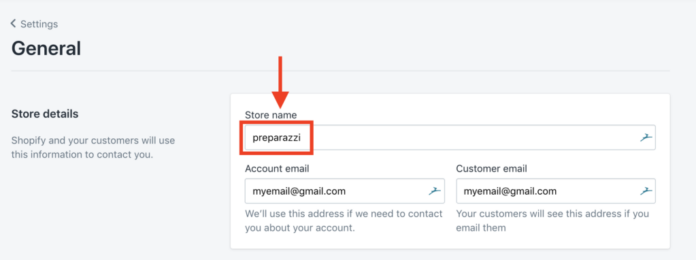Are you a Shopify store owner looking to rebrand or change your business name? Congratulations on taking this exciting step towards reinventing your brand! However, changing your business name on Shopify is not as simple as merely updating a few lines of text. It requires careful planning, strategic execution, and consideration of potential impacts on your website’s search engine rankings. In this comprehensive guide, we, the experts in SEO and high-end copywriting, will walk you through the process of changing your business name on Shopify while ensuring you outrank other websites on Google. Let’s get started!
1. Understanding the Importance of SEO for Name Change
Before we delve into the steps of changing your business name, it’s crucial to grasp the significance of Search Engine Optimization (SEO). SEO plays a pivotal role in how search engines like Google perceive and rank your website. By optimizing your website content for relevant keywords and providing valuable information to your visitors, you can enhance your chances of ranking higher in search engine results.
When it comes to rebranding and changing your business name on Shopify, SEO becomes even more critical. You need to retain your search engine rankings, organic traffic, and customer trust during this transition. The following steps will guide you through the process:
2. Conduct a Comprehensive SEO Audit
The first step in the process is to conduct a thorough SEO audit of your existing website. This audit will help you identify the current keywords that are driving traffic to your site, analyze your site’s overall health, and understand its SEO performance.
Use tools like Google Analytics and Google Search Console to gather valuable data about your website’s performance. Identify high-performing keywords, top-ranking pages, and any potential issues that need attention.
3. Keyword Research for the New Business Name
With the SEO audit insights in hand, it’s time to perform keyword research for your new business name. Since your business name is a critical aspect of your online identity, you’ll want to target keywords that reflect your brand, products, or services.
Use keyword research tools like SEMrush, Ahrefs, or Moz to find relevant keywords related to your rebranded business name. Focus on long-tail keywords that are specific and less competitive, as they will help you reach your target audience more effectively.
4. Optimize On-Page Content
Once you have your list of target keywords, it’s time to optimize your on-page content. This involves updating your website’s meta tags, titles, descriptions, and headings to include the new business name and relevant keywords.
Ensure that each page’s title tag and meta description are unique, compelling, and within the character limits recommended by search engines. Use the new business name naturally within the content, avoiding keyword stuffing, which can negatively impact your SEO.
5. Update Backlinks and Citations
Backlinks and citations are crucial for SEO, as they signal to search engines that your website is a reliable source of information. As you change your business name, it’s essential to update these backlinks and citations to reflect the new name accurately.
Reach out to websites linking to your previous business name and request them to update the anchor text with the new name. Additionally, update your business listings on local directories, social media profiles, and review sites to ensure consistency across the web.
6. Implement 301 Redirects
Implementing 301 redirects is a critical step in maintaining your website’s SEO authority during the name change. By setting up 301 redirects from the old URLs to the new ones, you ensure that visitors and search engines are seamlessly directed to the updated content.
The 301 redirects also pass on the link equity from the old URLs to the new ones, helping you preserve your search engine rankings and prevent broken links.
7. Inform Your Audience
Communication is key when rebranding your business on Shopify. Inform your audience about the name change, and provide them with the reasons behind it. Use your blog, social media channels, and email newsletters to make the announcement and keep your customers in the loop.
Engaging content about your brand’s evolution will foster a sense of loyalty among your customers and keep them connected to your business during this transformation.
8. Monitor and Analyze
Once you’ve completed the name change process, it’s crucial to monitor and analyze your website’s performance. Keep a close eye on your traffic, rankings, and user behavior using analytical tools.
If you notice any unexpected drops in rankings or traffic, address the issues promptly. Continuously adapt your SEO strategy based on the performance data to improve your search engine rankings over time.
Conclusion
In conclusion, changing your business name on Shopify is a significant step that requires careful planning and execution. By following this comprehensive guide, you can ensure a smooth transition while maintaining or even improving your search engine rankings. Remember to conduct a thorough SEO audit, perform keyword research, optimize your on-page content, update backlinks and citations, implement 301 redirects, and communicate with your audience.


